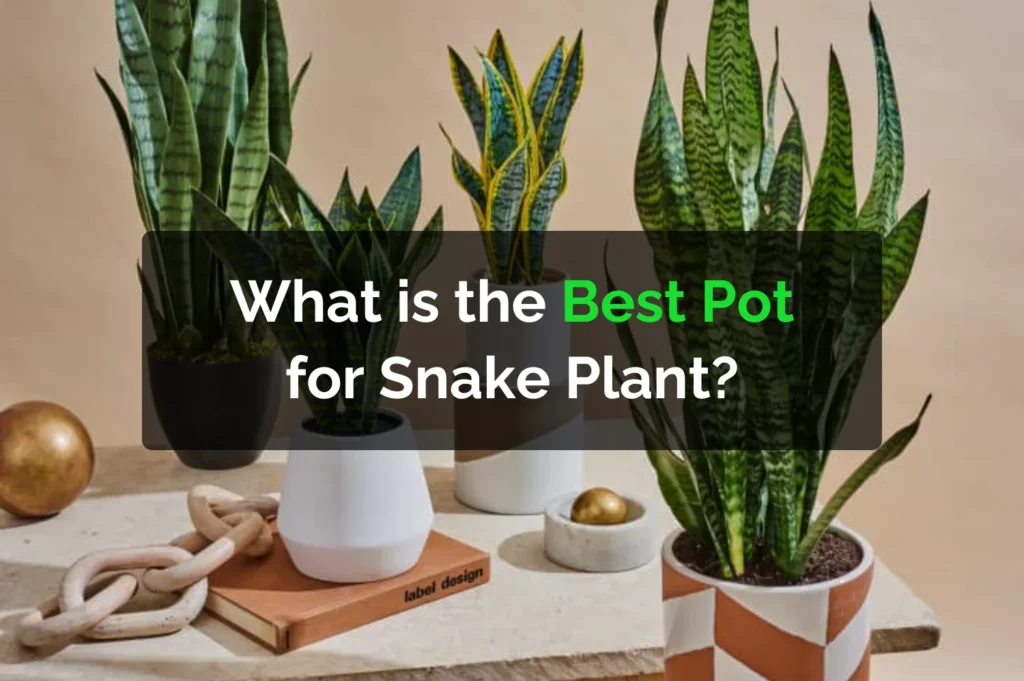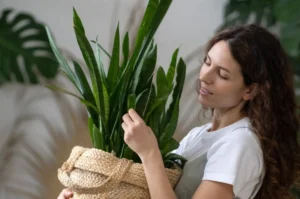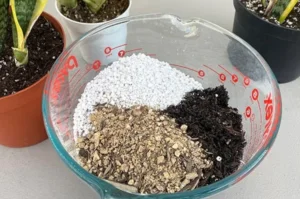Snake plants, also known as Sansevieria, are among the most popular indoor plants due to their hardy nature and striking appearance. These plants are known for their low maintenance needs, making them a top choice for both novice and experienced plant owners. Although snake plants are relatively easy to care for, choosing the right pot can significantly impact their health and growth. In this article, we’ll explore the key factors to consider when selecting a pot for your snake plant, including pot size, material, drainage, and more
Why the Right Pot Matters for Snake Plants
The pot you choose for your snake plant plays a significant role in ensuring its long-term health. While these plants are adaptable to various conditions, they do have specific requirements when it comes to their roots and soil. A proper pot provides the right amount of space for root growth, ensures effective drainage, and helps the plant thrive. Without the right pot, even the toughest snake plant could face issues like root rot or stunted growth.
1. Pot Size
When selecting a pot for your snake plant, size is crucial. The pot should not be too big or too small. A pot that is slightly larger than the root ball of your plant is ideal. If the pot is too large, it can hold excess water that might cause the roots to rot. On the other hand, a pot that is too small won’t give the plant enough room to grow.
Tip: Choose a pot that is about 1-2 inches wider than the plant’s root ball to ensure the roots have enough room to expand without being overwhelmed by too much soil.
2. The Importance of Drainage
Proper drainage is one of the most critical factors when choosing a pot for your snake plant. These plants do not like standing water, and excessive moisture in the soil can lead to root rot. Therefore, it’s essential to pick a pot that has drainage holes at the bottom to allow excess water to escape.
Recommendation: Always choose a pot with at least one drainage hole. If your pot does not come with drainage, consider adding rocks or gravel at the bottom to help with water flow.
3. Material of the Pot
The material of your plant pot affects its performance in several ways, including how well it allows for moisture control and airflow. Common materials for pots include plastic, ceramic, clay, and terracotta, each with its advantages and drawbacks.
- Plastic Pots: These are lightweight, affordable, and come in many styles. They retain moisture better than other materials, which can be helpful if you tend to forget watering. However, they don’t allow as much airflow to the roots.
- Ceramic and Clay Pots: These materials are breathable, which helps prevent overwatering and root rot. However, they dry out faster and may require more frequent watering. Ceramic and clay pots are also more decorative, giving your plant a stylish look.
- Terracotta Pots: Like ceramic and clay, terracotta pots are porous and allow for excellent airflow to the roots. However, they are more prone to drying out quickly, so they may need more frequent watering.
Ideal Choice for Snake Plants: Ceramic or terracotta pots are typically the best options for snake plants because they allow for proper airflow while also providing adequate drainage. Plastic pots can be a good alternative if you prefer to water your plant less frequently.
4. Pot Shape
The shape of the pot can also affect your snake plant’s growth. While both round and square pots work well, round pots are generally recommended. Round pots allow roots to grow evenly in all directions, helping the plant develop more symmetrically. Square pots can sometimes cause the roots to grow in an uneven pattern, which could restrict growth.
Best Option: Go for a round pot to ensure that your snake plant has space for its roots to grow in all directions.
5. The Best Soil for Snake Plants
While the pot itself is important, the type of soil used is equally essential for the health of your snake plant. Snake plants prefer soil that drains well and doesn’t retain too much moisture. A cactus or succulent potting mix is ideal because it provides the right balance of drainage and moisture retention. If you prefer to make your mix, you can combine standard potting soil with perlite or sand to improve drainage.
Tip: Avoid heavy, moisture-retaining soils, as they can lead to root rot.
So….. What is the Best Pot for a Snake Plant?
The best pot for a snake plant is:
👉 Terracotta pot with at least one drainage hole
Why?
✅ It’s breathable, allowing excess moisture to evaporate.
✅ Prevents soggy soil and root rot.
✅ Keeps roots healthy by providing good air circulation.
✅ Affordable and widely available.
Alternative:
A ceramic pot with drainage works well too, especially for those who prefer a decorative look.
Not Recommended:
Avoid self-watering pots or pots without drainage holes for snake plants. These increase the risk of overwatering and root rot.
How to Pot Your Snake Plant
Properly potting your snake plant will ensure that it thrives in its new home. Follow these steps to transplant your plant into a new pot:
- Select the Right Pot: Choose a pot that is 1-2 inches larger than the root ball of your snake plant.
- Prepare the Soil Mix: Make sure the soil drains well. A cactus or succulent mix works best.
- Prepare the Pot: Add a layer of small rocks or gravel at the bottom of the pot to help with drainage.
- Remove the Plant from Its Old Pot: Gently remove the plant from its current pot. If the plant is root-bound, carefully loosen the roots before placing it in the new pot.
- Place the Plant in the New Pot: Position the plant in the center of the new pot, then fill around it with soil. Gently press down to eliminate any air pockets.
- Water the Plant: After potting, water the plant lightly to settle the soil and help the roots adjust.
Is It Okay to Use a Pot Without Drainage Holes?
While it is possible to use a pot without drainage holes, it is not recommended for snake plants. Without drainage, excess water can accumulate at the bottom of the pot, leading to root rot. If you don’t have a pot with drainage, consider adding a layer of rocks at the bottom, but drainage holes are the best option for healthy plant growth.
Conclusion
Choosing the right pot for your snake plant is essential to its health and growth. Pay attention to factors like pot size, drainage, material, and shape to create the best environment for your plant. With proper care, the right pot, and a bit of attention, your snake plant will continue to thrive and add a touch of greenery to your home.






